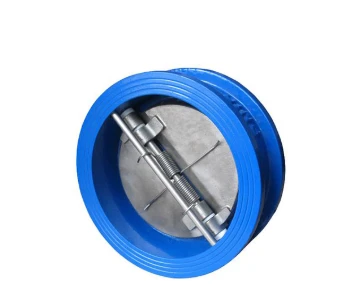Feb . 17, 2025 15:08
Navigating the complex realm of industrial valves can be daunting, particularly when each application demands a precise specification for optimal performance. In the world of fluid control systems, the three-flanged ball valve stands out as a critical component due to its robustness, reliability, and versatility. This article unearths the depths of the three-flanged ball valve, highlighting its design, functionality, and applications to ensure your decision-making process is both informed and strategic.

The three-flanged ball valve, an engineering marvel, is engineered for usage in various industries including oil and gas, chemical processing, power generation, and water treatment. Its key advantage lies in the unique design that incorporates flanges on all three ends, providing enhanced strength and the ability to manage high-pressure flow systems. This structural integrity minimizes the risk of leaks and ensures a secure fit, proving indispensable in sensitive environments where precision and safety cannot be compromised.
From a materials perspective, the three-flanged ball valve can be constructed from stainless steel, cast steel, or various other high-grade alloys suitable for different temperatures and chemical compatibilities. The choice of material is crucial as it directly influences the valve's resistance to corrosion, pressure, and temperature, thus dictating its suitability for specific applications. Stainless steel variants, for example, are highly sought after in industries that prioritize hygiene, such as food and beverage processing, due to their exceptional corrosion resistance and ease of sterilization.

Functionality is another pivotal aspect where the three-flanged ball valve distinguishes itself. Unlike other valve types, the ball valve's mechanism involves a rotating ball with a bore through its center. When aligned with the pipeline, media flows seamlessly through the valve; when perpendicular, it completely stops the flow. This simple yet effective design ensures low maintenance due to fewer moving parts and provides rapid isolation with just a quarter-turn operation. Furthermore, the ball valve design inherently offers a tight seal with minimal torque, making it an ideal choice for applications where quick shut-off is critical.
Precision control over fluid flow is enabled by the actuator options available for three-flanged ball valves. Whether manually operated, pneumatically driven, or electrically actuated, these valves cater to a wide range of control requirements. The choice of actuation often hinges on the operational environment and desired level of automation, highlighting the versatility and adaptability of three-flanged ball valves in seamlessly integrating into both manual and automated systems.
3 flanged ball valve
In terms of authoritative insight, the implementation of three-flanged ball valves has been endorsed by experts across various sectors for their reliability and durability. Industry leaders recommend these valves for their low pressure drop and high flow capacity, which are imperative for efficient system operation. Moreover, the secure flange connections facilitate straightforward maintenance and installation, a facet that diminishes operational downtime and enhances overall system productivity.
Trust is further solidified by adherence to rigorous industry standards and certifications, such as ANSI, ASME, and ISO, which govern the manufacturing and testing of three-flanged ball valves. Compliance with these standards ensures that the valve will perform as intended under specified conditions, providing reassurance to end-users regarding the product's safety and performance integrity.
An often-overlooked benefit is the environmental and cost-effectiveness of three-flanged ball valves. Their design minimizes leaks, which could otherwise lead to resource wastage and environmental contamination. The long service life and low maintenance requirements translate into reduced operational costs, making them not only a technically advantageous choice but also an economically prudent investment.
In conclusion, the three-flanged ball valve offers a unique blend of strength, reliability, and flexibility, crucial in meeting the demanding needs of industrial applications. Its robust construction, coupled with precise control capabilities and ease of maintenance, makes it a preferred choice among industry experts. For those seeking a valve solution that promises performance, safety, and cost-efficiency, the three-flanged ball valve emerges victoriously as a formidable asset in the world of fluid control systems.


 Call us on:
+86-311-86935302
+86-311-86935302
Call us on:
+86-311-86935302
+86-311-86935302
 Email Us:
info@thriveonvalve.com
Email Us:
info@thriveonvalve.com South of Huanmadian Village Town, Ningjin County, Xingtai, Hebei Province, China
South of Huanmadian Village Town, Ningjin County, Xingtai, Hebei Province, China